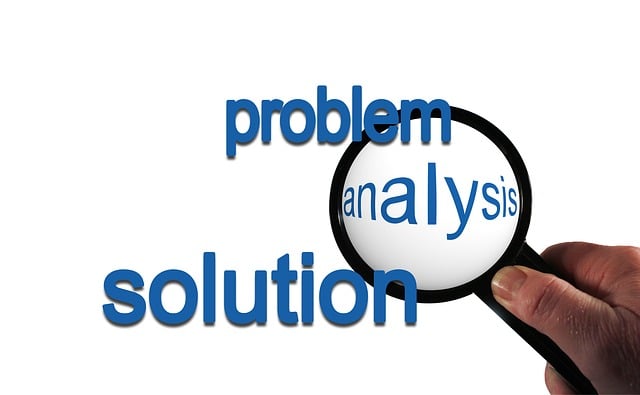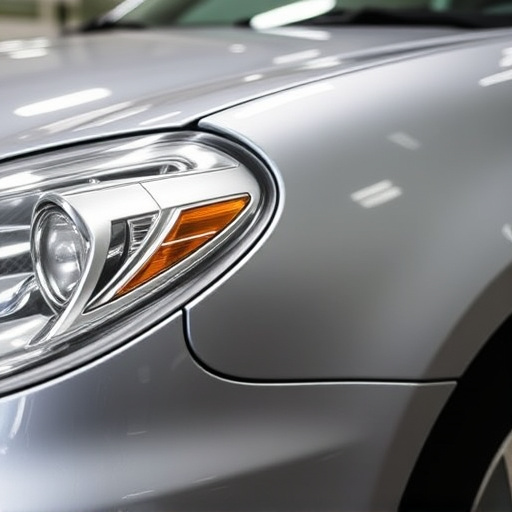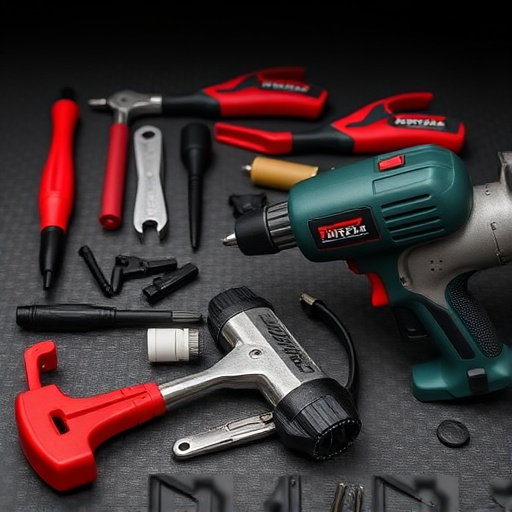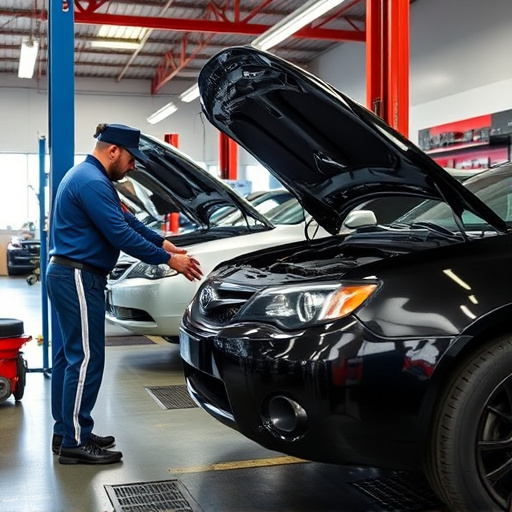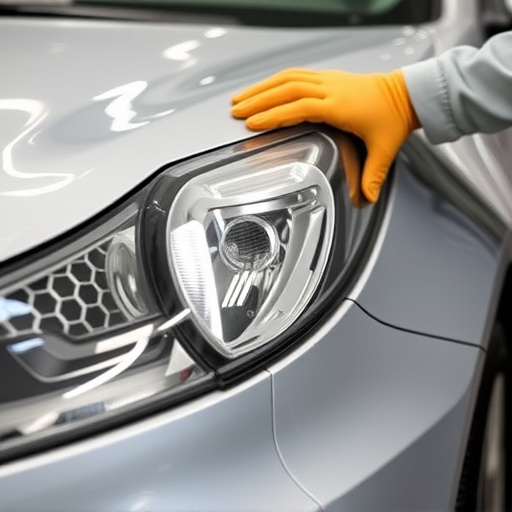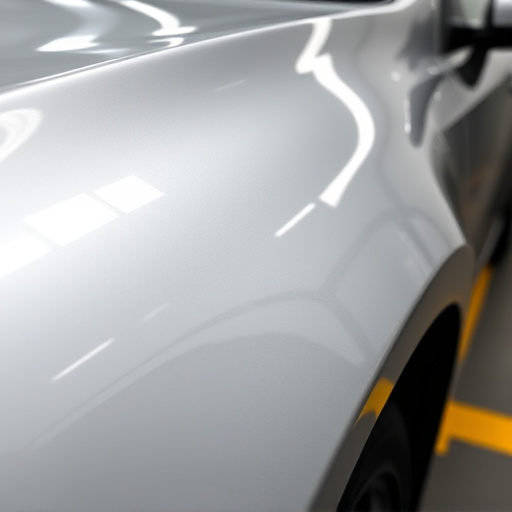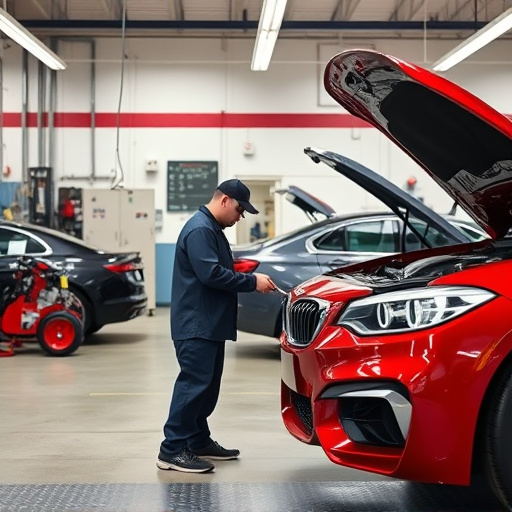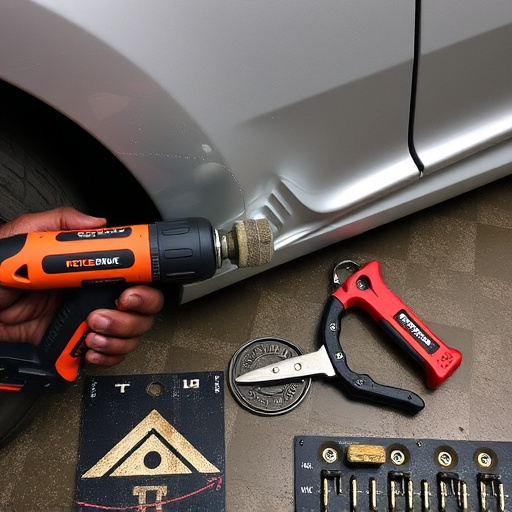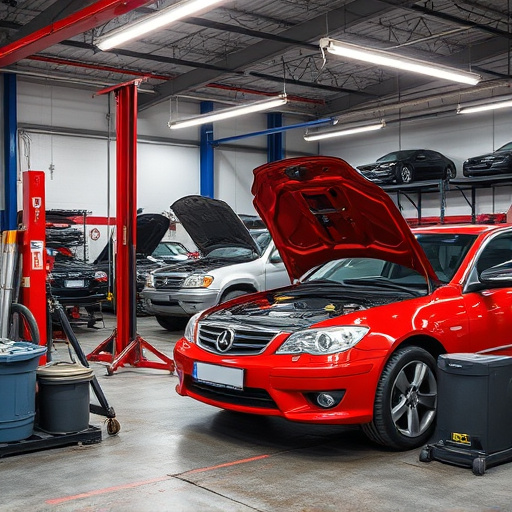Tesla's global repair network shops provide fast, efficient, and high-quality vehicle repairs worldwide, adhering to stringent brand standards. Using state-of-the-art technology and genuine Tesla parts, these specialized automotive body shops offer routine maintenance to complex damage repairs. After rigorous post-repair testing, each car undergoes a validation process ensuring structural integrity, safety features, paint job evenness, and overall aesthetic appeal. Future strategies leverage digitalization and predictive analytics to enhance efficiency and proactive maintenance within the evolving Tesla repair network shops.
“Unveiling the intricacies of Tesla’s global repair network shops is essential for maintaining the brand’s iconic quality standards. This article offers a comprehensive insight into how these specialized centers ensure seamless repairs and post-repair validation processes. From a worldwide network overview to best practices, we explore the critical role these shops play in keeping Tesla vehicles running optimally. Additionally, we glimpse into future trends shaping Tesla repair network management.”
- Understanding Tesla's Repair Network Shops: A Global Overview
- The Post-Repair Validation Process: Ensuring Quality and Safety
- Best Practices and Future Trends in Tesla Repair Network Management
Understanding Tesla's Repair Network Shops: A Global Overview

Tesla’s global repair network shops are strategically located to ensure fast and efficient vehicle repair services for their electric car owners worldwide. This network comprises specialized automotive body shops equipped with state-of-the-art technology, allowing them to handle a wide range of repairs, from routine maintenance to complex damage. Each shop is designed to deliver high-quality auto repair services while adhering to Tesla’s stringent standards and guidelines.
The repair process starts with an initial assessment, where skilled technicians diagnose the issue using advanced diagnostic tools. Once validated, the work begins, utilizing genuine Tesla parts to ensure optimal performance and longevity. Post-repair, vehicles undergo rigorous testing, including road simulations, to guarantee they meet safety and quality criteria before being returned to their owners, offering peace of mind for Tesla vehicle owners across the globe.
The Post-Repair Validation Process: Ensuring Quality and Safety

After a vehicle passes through Tesla’s repair network shops, an essential step ensures that the repair work meets the company’s high standards and is safe for operation. The Post-Repair Validation Process acts as a quality control measure, meticulously evaluating every aspect of the repaired car. This rigorous process involves comprehensive inspections, test drives, and checks to verify that all repairs are accurate, structural integrity is intact, and safety features function optimally.
The validation team pays close attention to details like paint job evenness, alignment accuracy, and functionality of electronics. Moreover, they assess the overall aesthetic appeal, ensuring the vehicle looks as good as new. This meticulous approach guarantees that each Tesla leaving their shops adheres to the brand’s reputation for excellence, providing customers with peace of mind and a reliable, safe automotive repair experience tailored specifically for electric vehicles.
Best Practices and Future Trends in Tesla Repair Network Management

As the Tesla repair network continues to evolve, best practices must adapt to meet the unique demands of this rapidly growing industry. One key aspect is standardization; implementing consistent processes and procedures across all network shops ensures quality control and a seamless customer experience. This includes uniform training programs for technicians, standardized pricing models, and the adoption of advanced diagnostics tools to accurately assess and repair vehicles.
Looking ahead, the future of Tesla repair network management lies in digitalization and data analytics. Efficient management systems that track inventory, streamline appointments, and facilitate real-time communication between shops and owners can significantly enhance operational efficiency. Moreover, integrating advanced technologies like autonomous driving data and predictive analytics can enable proactive maintenance and repair services, further revolutionizing post-collision repair processes, including frame straightening techniques, and ensuring Tesla vehicles return to their optimal condition.
Tesla’s global repair network shops play a pivotal role in maintaining the quality and safety of their vehicles. By implementing rigorous post-repair validation processes, these shops ensure that every vehicle leaves the premises in top condition. As the electric vehicle market continues to grow, adopting best practices and staying updated with future trends in Tesla repair network management will be essential for maintaining customer satisfaction and trust.
